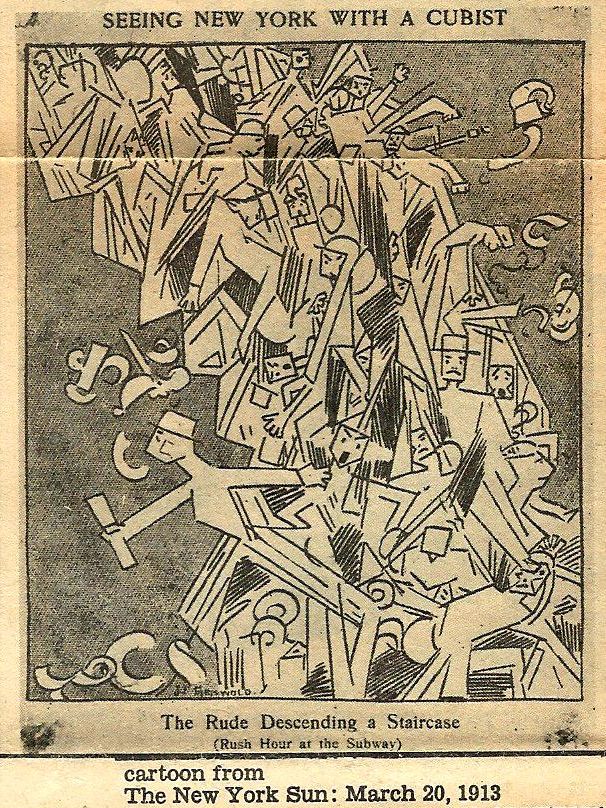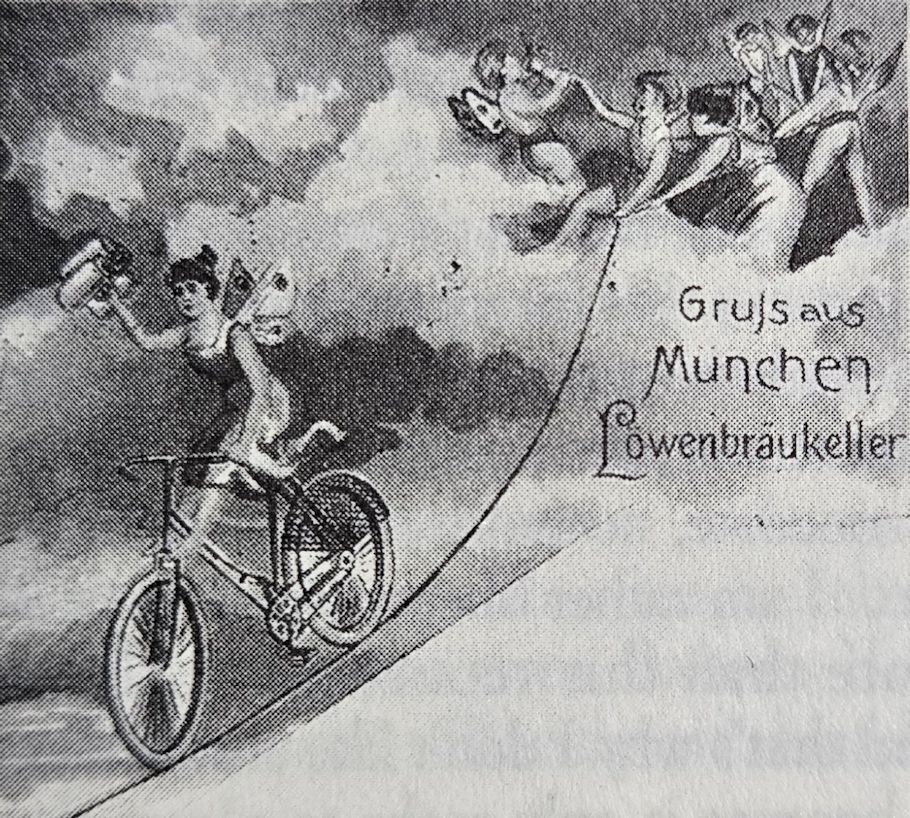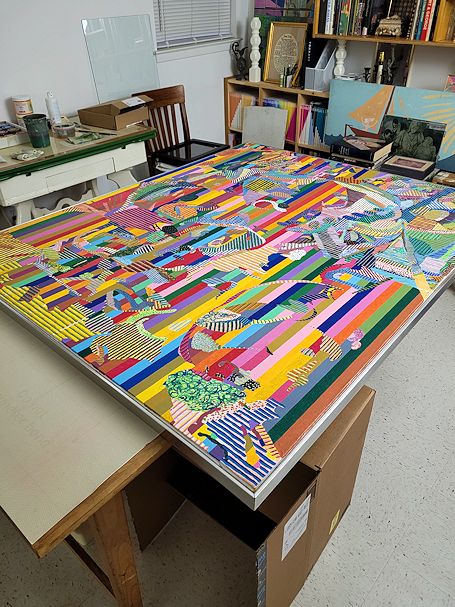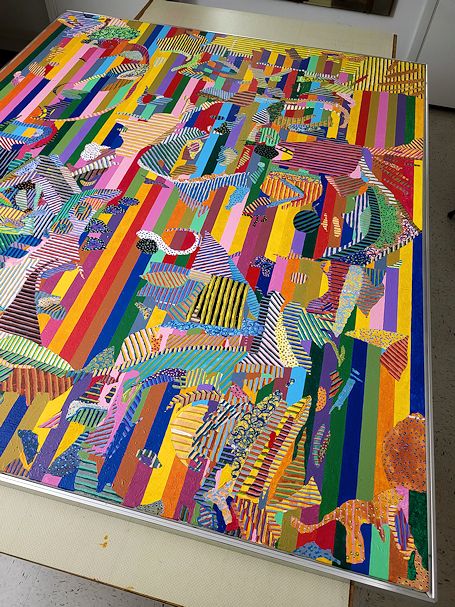2025.10.14
Extracts from Pontus Hulten, Jennifer Gough-Cooper, Jacques Caumont, Marcel Duchamp: Work and Life, Ephemerides on and about Marcel Duchamp and Rrose Sélavy 1887-1968 (1993).
17 February 1913. Monday, New York City
In the evening at the 69th Regiment Armory on Lexington and 25th, the Association of American Painters and Sculptors opens its "International Exhibition of Modern Art". The Armory Show, as it is known, has been organized with private funds by a small group of artists with the specific intention of breaking American complacency and apathy to Modern Art.
Francis Picabia, an exhibitor who has traveled with his wife from Paris, is the only artist from Duchamp's circle of friends who is present to witness the event.
23 February 1913. Sunday, New York City
In a group of drawings entitled "What Cesare saw at the Armory Show" published by the Sun, which includes cartoons of works by Matisse, Gauguin and Donoyer de Segonzac, Cesare has sketched his impression of the crowd before Nu descendant un Escalier
1 March 1913. Saturday, Albuquerque
On his return by train to San Francisco after visiting the Armory Show in New York, an art dealer Frederick C, Torrey of Vickery, Atkins & Torrey has second thoughts, disembarks from the train and swiftly sends a telegram to Walter Pach: "I will buy Duchamp nude woman descending stairway please reserve."
In New York on the same day, Arthur Jerome Eddy buys Portrait de Joueurs d'Echecs for $162. "[Eddy] was the first man in Chicago to ride a bicycle," noted Duchamp, "and the first to have his portrait painted by Whistler. That made his reputation! He had a very important law practice and collection of paintings."
2 March 1913. Sunday, New York City
After his purchase from the show yesterday, for $324 Arthur J. Eddy buys another Duchamp from the Armory Show: Le Roi et la Reine entourés de Nus vites.
20 March 1913. Thursday, New York City
Nu descendant un Escalier continues to inspire the cartoonists. Today the New York Evening Sun publishes J. F. Griswold's drawing Rude Descending a Staircase, subtitled "Rush Hour at the Subway". The cascading sequence of lines and geometrical interlocking shapes brilliantly pastiches the original paintings evocation of movement.

Not everyone agrees that the Nude gives the viewer a sense of progressive movement. J.N. Laurvik for his pamphlet, Is it Art?, writes that "...one is simply conscious of a series of flat figures, one overlapping the other, the sum total of which remains no less fixed than each separate unit and the attempt to achieve an illusion of motion without the concomitant physical and mechanical means employed by a moving picture results in an amusing failure, very entertaining as a new kind of parlour game but of very little value as art." Even if to some people it produces a sensation of movement, Laurvik declares, "It must be conceded that this, regarded as an end in itself, is a very puerile use of art and in no sense an amplification of its possibilities."
24 March 1913. Monday, Chicago
Just a week after its tumultuous closing ceremony in New York, 634 works from the celebrated Armory Show, including the four by Marcel Duchamp, Le Roi et la Reine entourés de Nus vites, Portrait de Joueurs d'Echecs, Nu descendant un Escalier, No.2 and Jeune Homme triste dans un Train, are on display again. An afternoon reception is held for members of the Art Institute which is followed by a gala in the evening, attended by society in force, for the benefit of the Municipal Art League.
Hanging in gallery 53, reserved for the Cubists, Duchamp's Nude is the one picture the public wants to see and it is the first illustration in the catalogue. The public flock to see the "Art Institute Circus", as it is dubbed by the Evening Post and revel in their bafflement, shock, hilarity or even fury roused by the new art.
4 April 1913. Friday, Chicago
Manierre Dawson, a young artist friend of Arthur Jerome Eddy's, buys Jeune Homme triste dans un Train from the Armory Show, which opened in Chicago on 24 March. It was the only one of Duchamp's four paintings in the exhibition not yet sold.
31 May 1913. Saturday, Paris
In the evening Duchamp attends a gathering of artists and poets at a tavern...
29 June 1913. Sunday, Puteaux
It has become a custom on a Sunday afternoon for the Duchamp brothers to receive their friends at 7 Rue Lemaître. As it is fine everyone gathers in the luxuriant garden shaded by the great horsechestnut tree. The painters Albert Gleizes and Francis Picabia have come today among the writers Jacques Nayral and Henri-Martin Barzun, who has brought his family. There are the usual diversions from the long and passionate discussions on art: archery, ball games including boules and spirobole, other games of skill such as the devil-on-two-sticks or cup-and=ball, and naturally Marcel's own board game of chance, the steeplechase.
*
Guillaume Apollinaire composes his manifesto L'Antitradition futuriste for Marinetti in which he says "shit" to various concepts and personalities past and present, and offers a rose to many of his avant-garde friends including Albert Gleizes, Francis Picabia, Marcel Duchamp, Henri-Martin Barzun, etc.
2 July 1913. Wednesday, Neuilly-sur-Seine
In the wake of the famous Armory Show which closed in Boston on 19 May, Duchamp writes belatedly to Walter Pach in New York about the sale of his four paintings: "I am very happy and thank you for the dedication with which you have defended our paintings."
Mr Torrey, proud possessor of Nu descendant un Escalier has been in Paris: "A very kind man," Duchamp remarks to Pach, "he appeared to be very pleased to meet us." When he presented Torrey with Encore à cet Astre, the sketch which precluded the Nude, the American asked for confirmation that the work of the group at Puteaux was derived from Cézanne. "I'm sure most of my friends would say so," answered Duchamp, "and I know that he is a great man. Nevertheless, if I am to tell what my own point of departure has been, I should say that it was the art of Odilon Redon."
Is Pach [sic] working a lot? "I am terribly upset at the moment and I'm not doing anything at all," Duchamp admits. "These are short unpleasant moments." In August, however, he plans to spend some time in England.
8 August 1913. Friday, Herne Bay
Acting as chaperon, Marcel has accompanied his sister Yvonne across the Channel to the north Kent coast where she is taking a course in English at Lynton College.
26 August 1913. Monday, Herne Bay
"All is well. We will spend the first four days of September in London and 10 days with the family at Yport."
30 August 1913. Saturday, Herne Bay
In reply to he letter, which has been forwarded from Paris, Duchamp writes a note to Elmer MacRae, treasurer of the Association of American Painters and Sculptors, acknowledging receipt of the remaining $600 due to him from the sale of his paintings at the Armory Show.
22 October 1913. Wednesday, Paris
Since his return to Paris after ten days holiday with the family at Yport, Marcel has moved from 9 Rue Amiral-de-Joinville in Neuilly to a brand new building at 23 Rue Saint-Hippolyte, not far from his friend Dumouchel, who lives at 44 Rue de la Clef in the 5ème arrondissement. In fact the building is still under construction, and for a while Marcel has to climb a ladder to reach his apartment.
On the new plaster-work, Marcel has stated plotting, full-scale, the definitive perspective composition of the Large Glass. Working mainly for the lower half from the vocal point of the line of the Bride's Clothes, he accurately plots the essential points of the Bachelor Machine, which is based on the first sketch on cardboard.
3 November 1913. Saturday, Paris
After attending classes at the Ecole des Chartes, Duchamp has been receiving instruction since May in the duties of under-librarian from the staff at the Bibliothèque Sainte-Geneviève , where Picabia's uncle Maurice Davanne is a librarian. It is due to his patronage that Duchamp is engaged on a temporary basis for two months to replace another librarian, M. Mortet, who is on leave. Considering it "a wonderful job" because he has so many hours to himself to continue his plans for the Large Glass, Duchamp is to receive 100 Francs (or 1,500 francs at present values).
20 November 1913. Thursday, Paris
Gabrielle Picabia has written Gertrude Stein whether they may bring their friend Marcel Duchamp to the Rue de Fleurus this evening.
2025.10.14

451.rhawn.gallery . . . figured out the story behind this image too.
2024.10.14
 
Reenacting The Largest Painting In The World
2005.10.14 13:57
Jimmy Venturi's new website...
Is changing history the same as making history? I'd say the work of VSBA made history by their introduction of directions of architecture theory and practice other than the (then) status quo. Changing history is different and occurs in at least two different ways. History is changed when events are recorded and taught as history but are not really reflective of what actually happened, like the 'perversion' that Venturi feels happened to his theory, and, inversely, history is changed when a discovery occurs that nullifies established certainties, like the discovery of there actually being two renditions of Piranesi's Ichnographia Campus Martius.
1994.10.14
forms of imaginations
…the whole issue of metabolism and how metabolism is a driving force behind [a] form of imagination. …the nature of possible future forms of imagination...
|